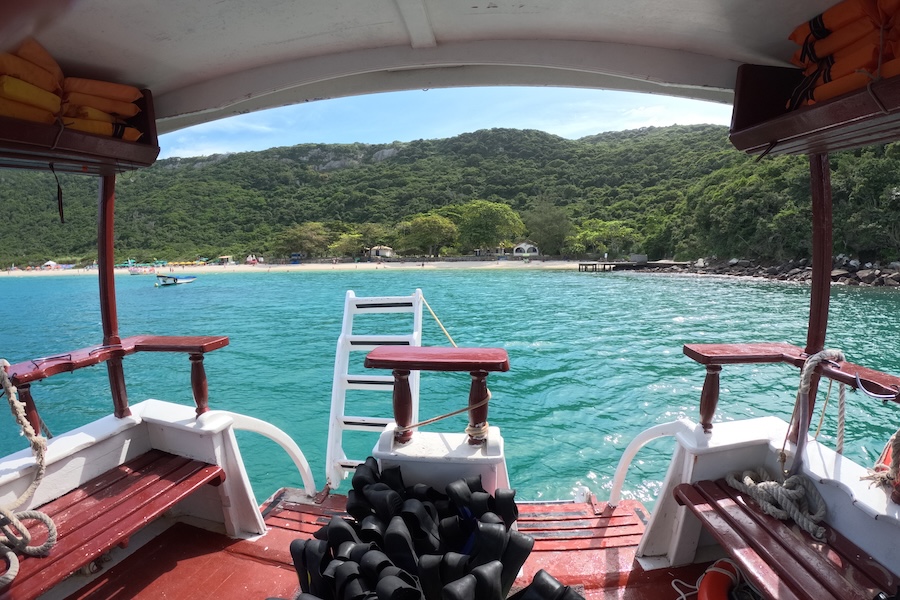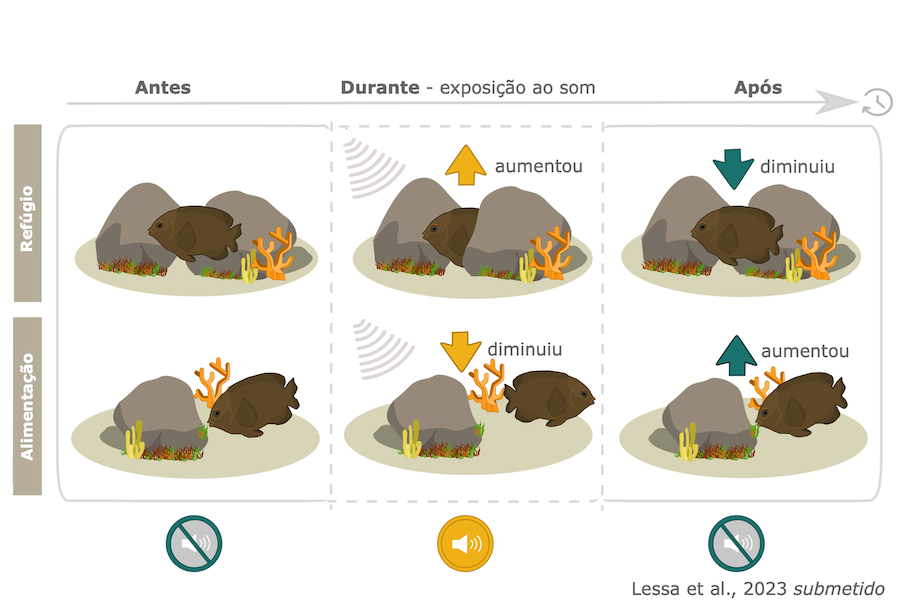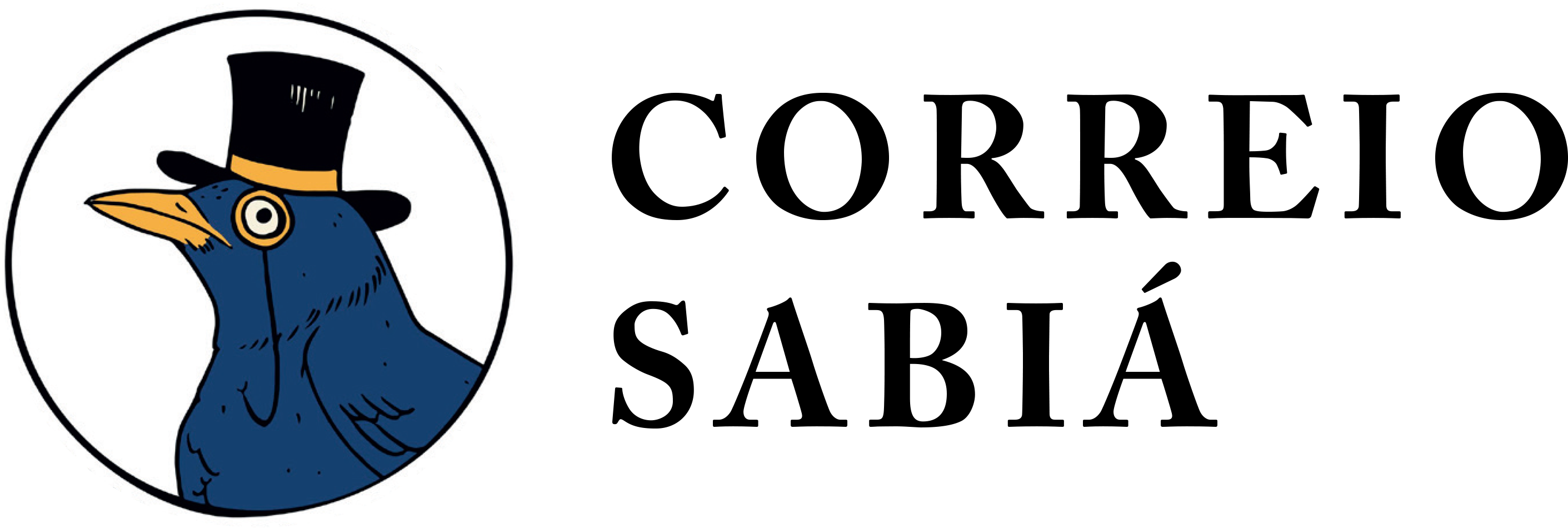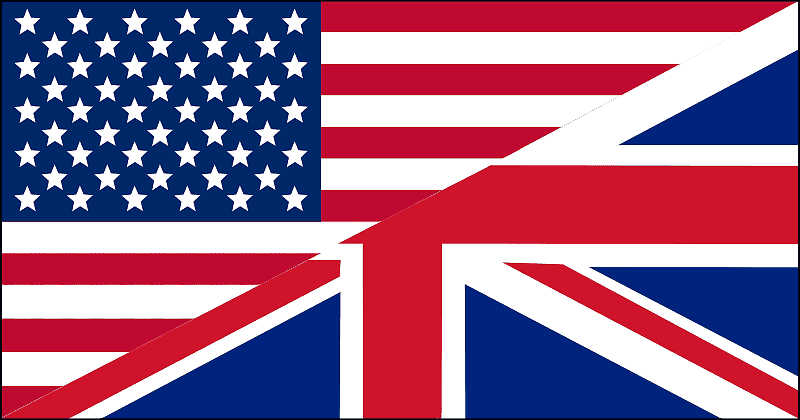Ocean noise pollution has a big impact on the small damselfish, study reveals
Like plastic, underwater noise is also a form of pollution that can affect marine life
More time spent in hiding and less time spent searching for food. These were some of the main effects caused by noise pollution in the ocean on the behavior of damselfish (Stegastes fuscus), a small species that measures up to 20cm.
The concerning findings are from the master’s thesis in marine biotechnology by researcher Aléxia Lessa, who presented the study to the IEAPM (Instituto de Estudos do Mar Almirante Paulo Moreira) and the UFF (Universidade Federal Fluminense). Here is the full text (PDF) of the research, in Portuguese.
“The effects detected significantly influenced key behaviors in the species’ life cycle, which could generate critical effects on the dynamics of the reef as a whole,” wrote Lessa.
The damselfish is the most abundant territorial herbivorous fish along the entire Brazilian coast. Therefore, scientists fear that an imbalance in the behavior of this species could have more serious consequences for the ecosystem as a whole.
“The underwater acoustic landscape is changing rapidly and in light of this, there is an urgent need to assess the consequences of anthropogenic pressure [caused by humans] on species and processes to provide measures that mitigate this impact, which remains neglected,” says the researcher.
Among other factors, the urgency of mitigation measures is related to the protection of fishing activity and tourism itself. Ironically, tourist excursions carried out by various vessels, if not controlled, tend to reduce marine life. In turn, this tends to reduce the tourism potential of a region.
The same goes for fishing: An imbalance in the biome can reduce the amount of fish. In the end, unsustainable exploitation affects your food plate, food prices, and even leisure. Likewise, it also impacts the financial situation of families that depend on these activities. Ultimately, it has negative consequences for the city and the region.

INTERVIEWS AND EVEN SCUBA DIVING IN ARRAIAL
The study was conducted in the marine sanctuary in the municipality of Arraial do Cabo, state of Rio de Janeiro (Brazil), and specifically analyzed the impact of noise from nautical tourism vessels on damselfish.
Arraial do Cabo is located in an area known as the Lagos Region, and its beaches have some of the most crystal clear waters in the country, hence its nickname the “Brazilian Caribbean.”
This feature makes it the perfect place for marine research, as well as tourist exploration. Lessa’s dissertation says that the number and frequency of tourist vessels are increasing, “especially during high season.”
This reporter went to Arraial to understand the problem, conduct interviews, and scuba dive. All this was undertaken with support from Internews’ Earth Journalism Network through its program “Ocean Media Initiative Story Grants 2023: Reporting on Marine Pollution,” in which Maurício Ferro, the founder of Correio Sabiá, was one of nine journalists selected worldwide.
To raise awareness about marine noise pollution and widen the reach of this reporting initiative, Correio Sabiá and Congresso em Foco entered into a partnership to jointly publish this report. 🤝
The footage was recorded using a GoPro sports camera, which allows for high-quality underwater filming. With this device, we also carried out the interviews to produce the multimedia report.
Watch the documentary “Ocean Noise Pollution” (captions in English):
RESEARCH BREAKS NEW GROUND IN UNDERSTANDING THE EFFECTS OF SOUND ON SMALL FISH
To carry out the study, Lessa traveled to the field to study the damselfish’s behavior. She says she went snorkeling (in this case, there was no need for an oxygen tank because the species lives in shallow reef environments) to introduce hydrophones, subject them to sound and record the consequences with cameras also placed underwater.
“We put the camera right in front of their territory, the damselfish, and let the camera record. Then we collect all the equipment and, in the laboratory, we can take stock, see what happened,” she explained.
Looking at the results, Lessa said boat noise affects two main behaviors: feeding and hiding. When subjected to the sound, the fish withdrew. In other words, they spent more time taking refuge in their ‘dens’ and, consequently, reduced their feeding activity.
“Another behavior that we evaluated was aggressiveness, which we call agonistic behavior. They [the damselfish] ram the other fish to scare them away from their territory, and we were able to see interference precisely in this behavior. Because they spend more time hiding, they stop defending their territory, defending their nest, and also feeding themselves,” Lessa detailed in the study.
Dr. Carlos Eduardo Leite Ferreira is an associate professor in the Department of Marine Biology at UFF (Universidade Federal Fluminense) and one of the greatest experts in the marine ecology field in Brazil. He stated that “all fish communication is with sound,” and therefore “any sound that disrupts this [communication] will cause problems in the fish’s life cycle.”
“Within the life cycle, we are mainly talking about reproduction, which is the most important, but also other social interactions that lead to reproduction and even predation,” he said. “To escape predation the animal has to hear different types of sounds to escape. So, [marine noise pollution] affects the whole reproduction part and also food foraging.”
“[I]t affects the total life cycle of the fish, and we know very little [about the subject]”, Cadu, as he is known, added.
Viviane Barroso, an oceanographer and Ph.D. student in marine biotechnology and a specialist in artificial intelligence applied to acoustic ecology in the UFF’s IEAPM, highlighted another detail about noise pollution: the frequency of noise caused by vessels.
“Boat noises are generally produced at low frequencies, and these low frequencies are generally the same frequency range as marine organisms, such as fish, for example. So, this can cause an overlap of sounds, masking the sounds that are important for the communication of these organisms and affecting the reproduction of these species,” she said.

- To support Correio Sabiá in doing more breath-taking reports like this, click here.
- If you are a company interested in supporting this and/or other Correio Sabiá projects, get in touch with us by WhatsApp.
MAKING SENSE OF OCEAN NOISE POLLUTION
To better understand the impact of sound on the life of a marine species, let’s draw an analogy to a scenario that might happen on land. Imagine, for example, that some nearby construction work starts at a time when you need to concentrate.
A normal reaction would be to close the windows or even leave and go someplace else. All in all, the situation would probably be stressful.
In the case of noise pollution not on land, but in the water, something similar also happens with animals, interfering with the ecosystem.
“In Arraial do Cabo there is a diving spot called Enseada do Gato […] and there is a crossing route [for boats],” said a diving instructor in Arraial do Cabo Ronnie Tavares. “Due to this flow of vessels, underwater noise, the sound of engines is very frequent.”
“We choose not to go to this diving spot not because of the lack of marine life, which is very abundant there, but because the sound from the boat ends up being very constant and bothers us divers. This makes me think a little that marine life must also end up feeling bothered by the same thing,” he added.
Dr. Fabio Contrera, a collaborating professor within the PPGBM (Postgraduate Program in Marine Biotechnology) at UFF’s IEAPM (Almirante Paulo Moreira Institute for Sea Studies), recalled that there is pollution caused by vessels, but also other types of noise that interfere with the environment too.
“If you go to the beach now, you’ll be influenced by ship noise from quite a long distance away. So it’s there, an accumulated noise, but we have other noises: construction noise, noise from equipment that is on the ship, other than those that make the ship move, other equipment,” he said.

TAKING MEASUREMENTS TO FIND SOLUTIONS
One of the great novelties of Lessa’s research is being able to measure the impact of noise pollution on a relatively small fish, which can grow up to 20cm long in some cases, but is usually found to be between 14cm and 16cm in adulthood.
Until now, the effects of noise pollution on marine animals were best known in cetaceans (whales and dolphins, for example). By measuring how harmful noise caused by humans (called anthropogenic noise) can be to oceanic biodiversity, the research can support the identification of solutions. Among these fixes is the possible establishment of standards for navigation routes or traffic frequency.
“Our results are important to help local rules for managing vessel traffic, in addition to helping to prepare marine regulations,” said Lessa.
At the time of publishing this report, Brazil still did not have specific laws to limit oceanic noise pollution.
What existed here were just 2018 technical guidelines from the Marine Biota Monitoring Guide, produced by IBAMA (Brazilian Institute of the Environment and Renewable Natural Resources), the main environmental inspection body.
However, the guide only covered seismic activities (in this case, seismic prospecting, or the mapping of the ocean floor used in the oil and gas industry). To do this, they defined a minimum distance away from whales and dolphins that such activities must take place. In the event of a sighting or acoustic detection of cetaceans and chelonians, the air guns used to prospect must be shut down.
On the other hand, currently, IBAMA has requested studies and acoustic monitoring programs for maritime works and licensing of some offshore operations, as is the case of drilling through the pre-salt layer of the Earth, which contains oil reserves off the Brazilian coast.
“The pre-salt [activity] has a huge monitoring program for the underwater acoustic landscape, which was one of the conditions for the license,” highlighted Contrera.
Europe has made progress in regulating marine noise pollution. Recently, it defined limits on speed and standards for propeller and engine maintenance, better boat designs, etc. For Contrera, Brazil must go in the same direction. “This is the natural path for any country,” he said.

More details regarding the ocean noise pollution project, such as some behind the scenes, are available on Correio Sabiá’s Instagram (@correiosabia) and Ocean Noise Pollution’s Instagram (@ocean.correiosabia).
Apoie nossos voos
Fazemos um trabalho jornalístico diário e incansável desde 2018, porque é isso que amamos e não existe nada melhor do que fazer o que se ama. Somos movidos a combater a desinformação e divulgar conhecimento científico.
Fortalecemos a democracia e aumentamos a conscientização sobre a preservação ambiental. Acreditamos que uma sociedade bem-informada toma decisões melhores, baseadas em fatos, dados e evidências. Empoderamos a audiência pela informação de qualidade.
Por ser de alta qualidade, nossa operação tem um custo. Não recebemos grana de empresas, por isso precisamos de você para continuar fazendo o que mais gostamos: cumprir nossa missão de empoderar a sociedade civil e te bem-informado. Nosso jornalismo é independente porque ele depende de você.
Apoie o Correio Sabiá. Cancele quando quiser.






